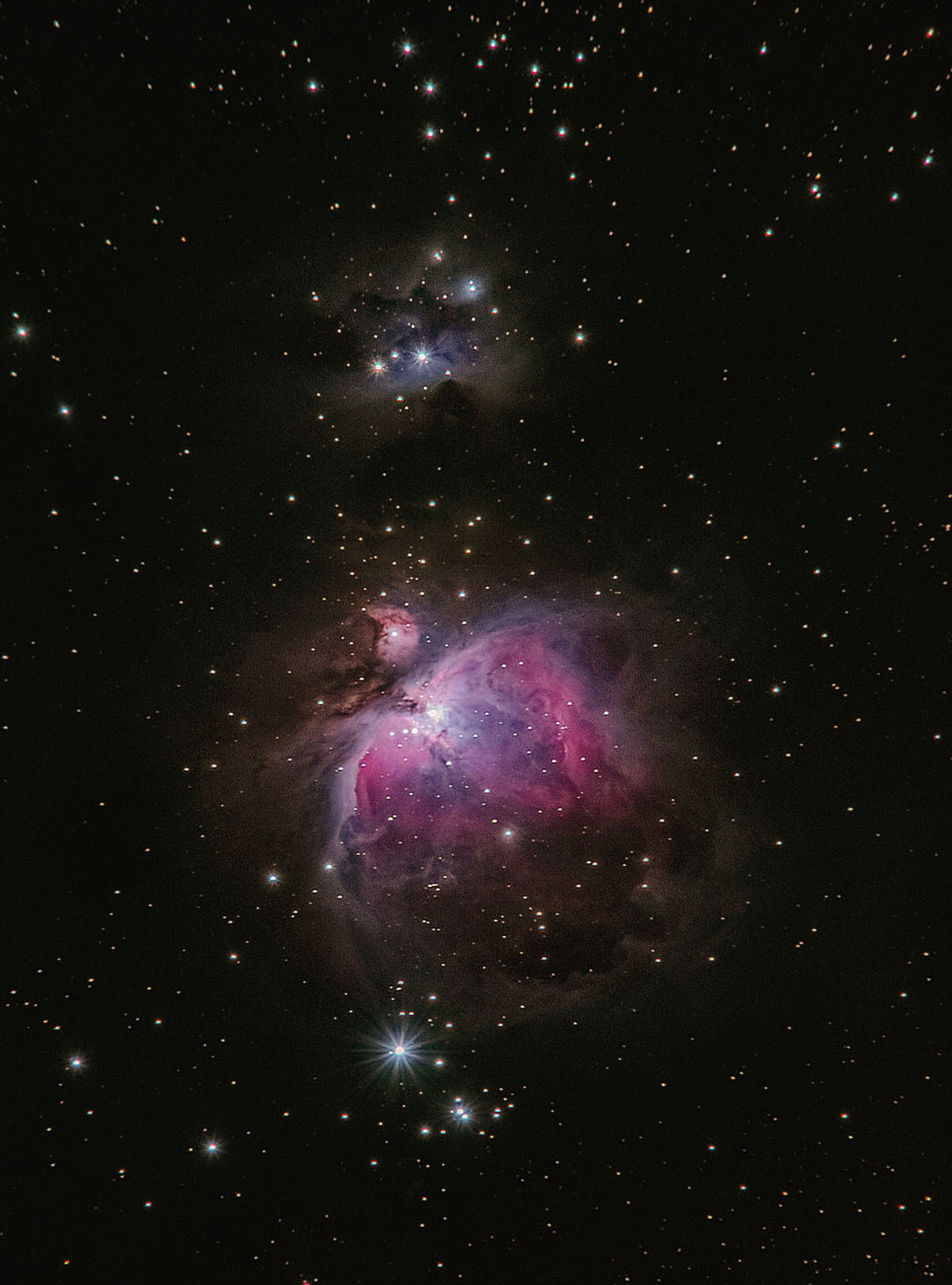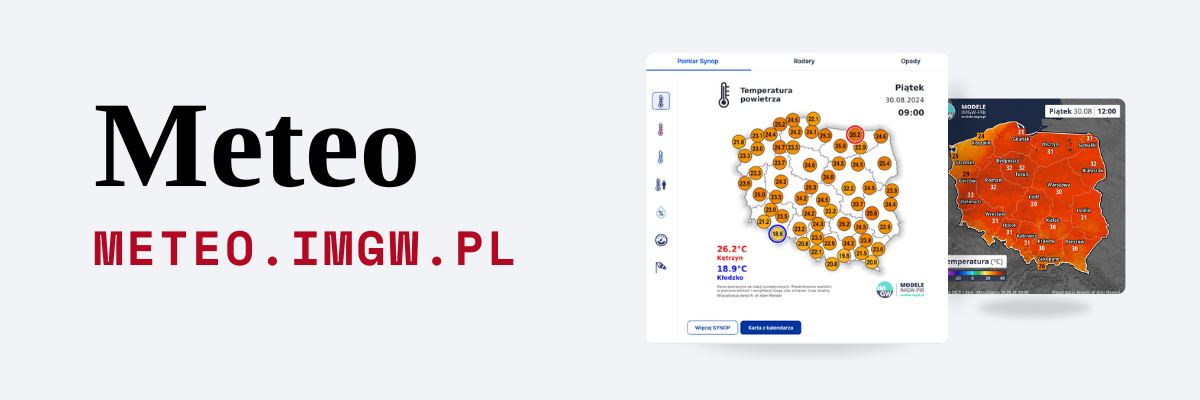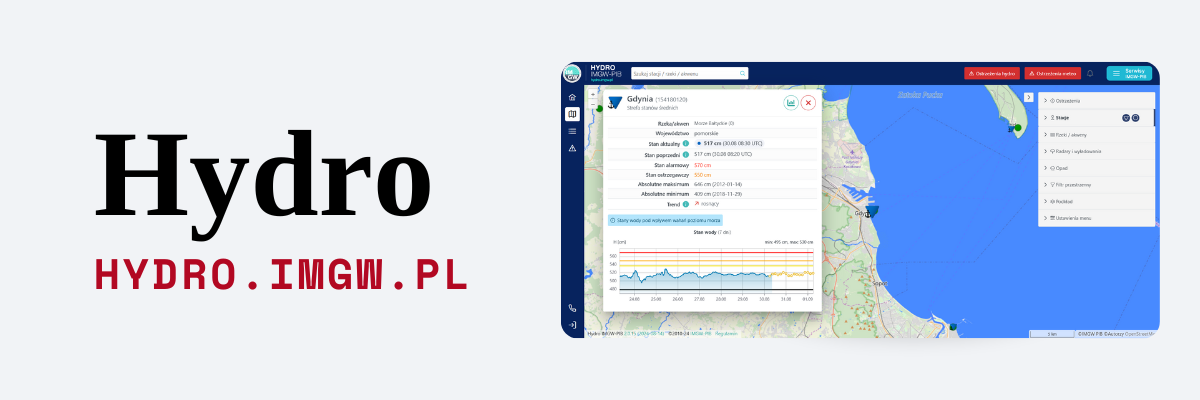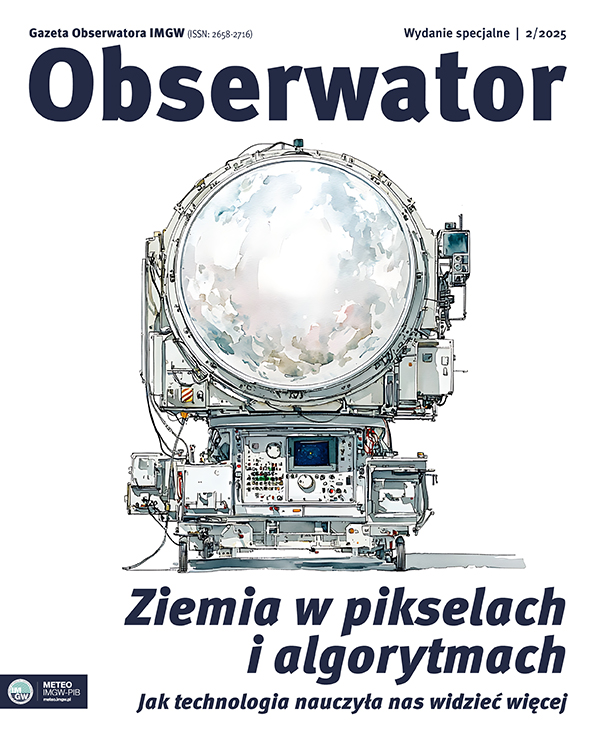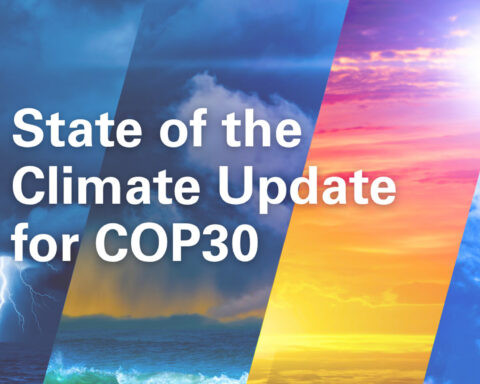The first attempts to apply models to simulate atmospheric phenomena on other planets in the solar system appeared in the late 1960s. The subject of particular interest to researchers was Mars. This research coincided in time with a series of remote sounding missions aimed at unraveling the mysteries of the red planet. Climate and weather models have quickly become a valuable resource for teams planning complex and dangerous space programs. The culmination of these successes was solving the mystery of Mars’ atmosphere. Nowadays, scientists are discovering the secrets of the Earth’s twin planet – Venus, because of climate models.
AUTHOR: Mariusz Figurski, IMGW-PIB/Laboratory of Advanced Meteorological Modeling Methods
The MarsGCM model is the basic model used to simulate the climate and weather conditions on Mars. It is based on simple equations of atmospheric motion, which consider pressure gradients, gravity, viscous friction and the processes of heating and cooling the planet’s surface with solar and infrared radiation. It assumes that the main component of the Mars atmosphere is carbon dioxide, which can condense and release latent heat. One of the first experiments based on the MarsGCM model were simulations made for the summer solstice and autumn equinox periods in the southern hemisphere of Mars. The modeling resulted in an image of the formation of the strong western zonal winds at the mean and high latitudes of the planet, generated by the Coriolis force torque. The simulations also proved cyclones undulation on the winter hemisphere and a southern circulation passing through the equator, with a strong east breeze near the equator and a light east breeze on the part of the summer hemisphere. Interestingly, the experiments confirmed that the conditions on Mars during the equinox period are very similar to those on Earth.
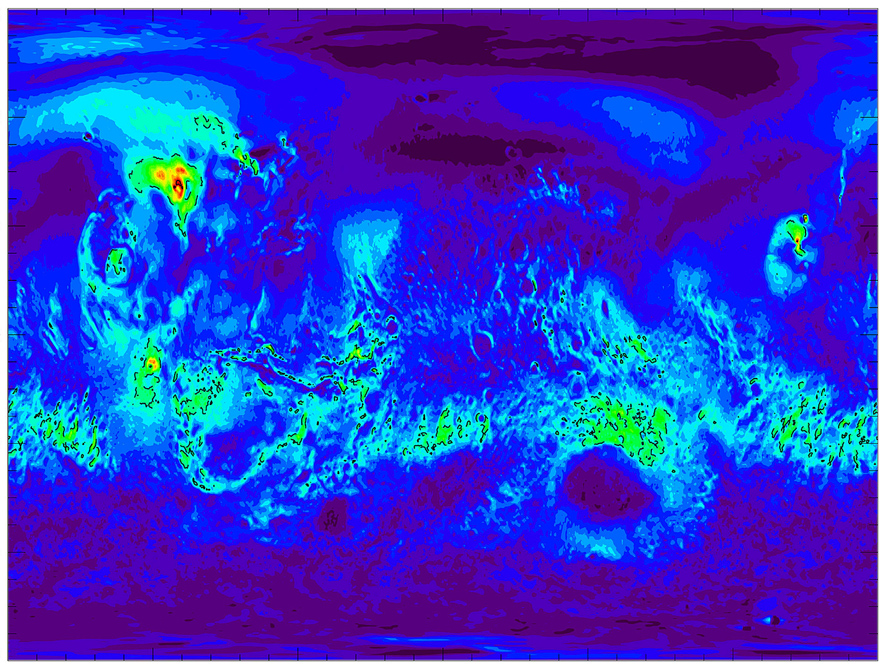
The mystery of the disappearing atmosphere
About 4 billion years ago, Mars’ atmosphere was denser and contained more oxygen than the Earth’s atmosphere. Today, it consists mainly of carbon dioxide, nitrogen, and argon. The explanation of this puzzle has become a great challenge for the scientific world. Using data obtained from probes orbiting Mars and climate simulations, the researchers determined that the direct cause of the gradual decline of gas from the planet’s upper atmosphere is the presence of a constant flow of solar wind. Unlike Earth, Mars has no magnetic field to protect it from the destructive impact of cosmic radiation. As a result, the solar wind energy flux forms a specific magnetosphere around the planet. The visualization of computer simulations shows how charged particles move around Mars, from the day side to the night side and connect the upper atmosphere and the magnetosphere with the solar wind. The currents thus aroused transform solar wind energy. As result, formed electric and magnetic fields, accelerate the charged particles of Mars’ atmosphere to such an extent that they can overcome the planet’s gravitational pull and fly off into interplanetary space. This is how the oxygen „released” from the red planet.
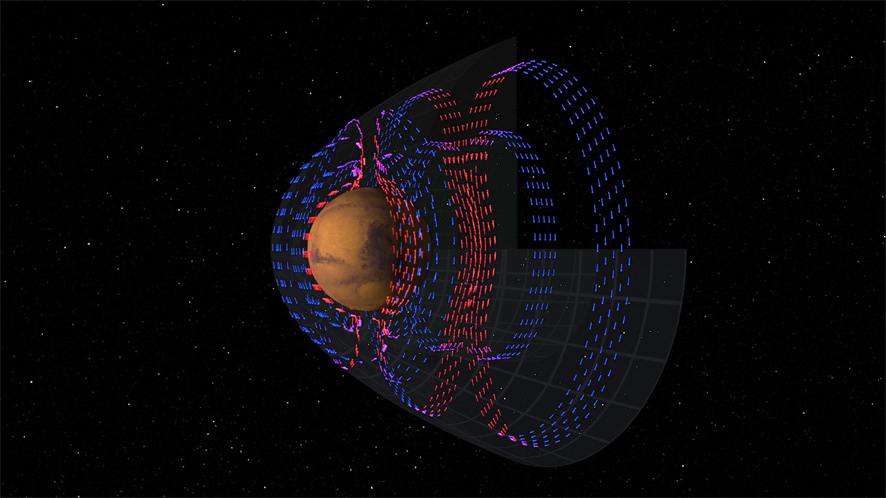
(source: NASA/Goddard/MAVEN/CU Boulder/SVS/Cindy Starr).
Airport on the Mars and weather forecasts
Martian missions require very detailed planning of each phase, especially the entry into the Mars atmosphere and landing. Any mistake would rule out the success of the expedition. It turned out very quickly that the climate and forecast models were also applicable in this area. The first simulations of the predicted landing descent profiles were performed during the 1996 Pathfinder mission. The experiments analyzed two scenarios of dust propagation in the Mars atmosphere. The aim of the study was to estimate the accuracy of the forecasted distribution regarding the actual measurements. A unified version of planetWRF was modified to the Mars conditions (MarsWRF) and used for the forecasting. The results were comparable to the observational data from previous Martian missions. The simulations made with the MarsWRF model showed correct modeling of the observed profiles. However, there was a tendency to underestimate the temperature and overestimate the dust density for altitudes over 15 km above the surface of Mars. The latter discrepancy is probably due to the incorrect mapping of the vertical profile of atmospheric dust, which strongly influences the heating rate and thus other variables of the model. Nevertheless, the results were satisfactory and used in the subsequent phases of designing and planning future missions to Mars. Similar tests were carried out for the following assignments: Mars Exploration Rovers Opportunity and Spirit (2003), Phoenix (2007), Mars Science Laboratory Curiosity Rover (2011), and ExoMars (launched in 2016).

The potential of the MarsWRF mesoscale model was fully revealed during three research campaigns carried out by the Curiosity rover. The site of the experiment was around the Gale crater, where measurements were made using an automatic environmental monitoring station. During the mission, precious information was collected about the Martian environment, morphology, structure, and composition of the active Mars dune field. The obtained data allowed for developing a pattern of wind circulation around the huge Aeolis Mons dune. During the day, the wind updrafts towards the top of the dune from the northwest, and at night it drops towards the southeast. The air rotates largely clockwise between these periods, generating west winds in the morning and east winds in the early evening.
This real image is in accordance with the forecasts of the MarsWRF numerical model, although the model simulated updraft winds with a stronger east than west component. The forecasted wind speed during the day was smaller by about 2-4 m/s, and the model did not show the correct time of occurrence of the maximum wind speed around 9:00. Further analysis showed that the reason for these differences is that the dune blocks the north winds. The model has been adjusted accordingly, e.g. a lower resolution vertical grid was used, resulting in the lower relative strength of the night winds and a forecast of the wind speed peak around 9 o’clock.

The MarsWRF model has also been used to forecast conditions for the descent profiles in the Martian ExoMars 2020[1] and Mars 2020[2] missions. Simulations made for the two landing sites of ExoMars rovers indicate a possible high dustiness at an altitude of 10-15 km and a wind difference: up to +/- 30 m/s for Oxia Planum (Martian plain near the equator) and +/- 15 m/s for Jezero Crater ( located on the border of the highlands and northern lowlands of Mars, on the western edge of Isidis Planitia). The model also determined the best time to perform the descent from orbit and landing maneuver (between late morning and early afternoon) when wind velocity and change of its direction are minimal.
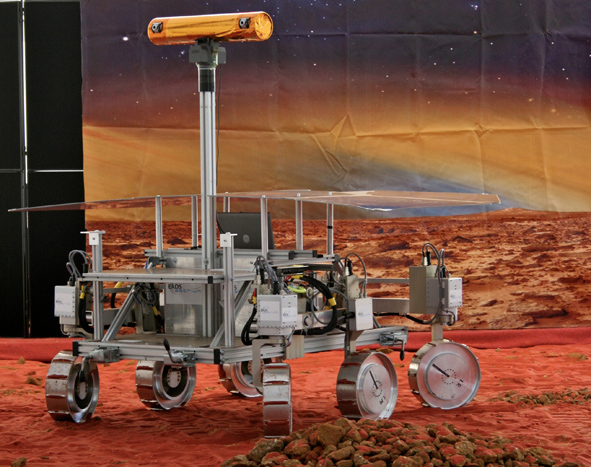
Climate and weather models reveal Venus’s mysteries
After successes in modeling the atmosphere of Mars, scientists quickly focused on the planet Venus which is neighboring the Earth and is covered with an opaque layer, well-reflecting light, sulfuric acid clouds. The first issue the researchers encountered was obtaining the necessary data about its atmosphere to correctly determine the initial conditions of the models. This information was collected during satellite missions to reach or orbit the planet’s surface. Based on this, the Japanese researchers developed a numerical model of the Venusian weather forecast AFES-Venus. Scientists managed to recreate, among others, super-rotational winds and temperature changes structures in the polar regions of Venus’s atmosphere. Unfortunately, the lack of reliable observational data makes it difficult to confirm the accuracy of the obtained results. On the other hand, computer weather simulations on Venus are invaluable for planning future satellite missions on this planet and understanding its nature.
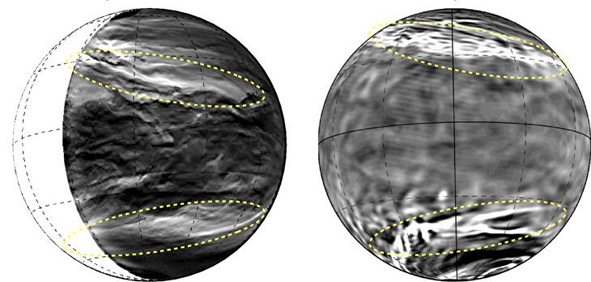
The study of Venus’s atmosphere, similar to that on Mars, used a global-mesoscale model of WRF planets, called VenusWRF. It implemented the geometrical and physical characteristics of the planet and previous research obtained from Venusian probes. The first studies simulated the global circulation of the atmosphere, emphasizing the phenomenon of superrotation. The image of the planet with the western winds dominating at all modeled levels was obtained, with a strong equatorial superrotation at an altitude of about 70 km. However, the temperature and south wind anomaly fields showed the existence of a large single Hadley cell. They are also observed on Earth as part of the tropical atmospheric circulation. Further simulations also showed that Venus’s superrotation acceleration was much faster than that of Titan, which used a similar model but adapted to the conditions of Saturn’s largest moon. Subsequent simulations have generated barotropical unstable mid-latitude currents in Venus’ atmosphere, generating waves westward towards the equator, thereby maintaining super-rotational winds there. There is also a reversal of the southern temperature gradient in the upper atmosphere (at 100 Pa), which appears as a feature of the so-called „warm pole” observed by the Venus Pioneer spacecraft. The presented examples of numerical simulations applying global and mesoscale models do not exhaust the spectrum of their applications for Venus.
The science here and now
Recent media reports show how significant model studies of planetary atmosphere circulation are. On September 14, 2020, it was reported that an international team of researchers had discovered phosphines in the atmosphere of Venus. A press release from the European Southern Observatory (ESO) and the article „Phosphine gas in the cloud decks of Venus,” published in Nature Astronomy, found the intriguing discovery of the biosignatures of Venusian life. The authors themselves were very restrained, explaining that confirmation of the presence of living organisms in Venus’ clouds requires direct research in the planet’s atmosphere and can no longer be considered a fact. Phosphine (PH3) is well known on Earth – it is widely used in the fight against crop-destroying pests. During World War I, it served as a chemical warfare agent. Venus and Earth are not the only planets on which this substance occurs. It was formerly found to be present in the atmosphere of Jupiter and Saturn.
The discovery of PH3 at Venus was made using the James Clerk Maxwell Telescope (JCMT) in Hawaii and confirmed by the Atacama Large Millimeter/submillimeter Array (ALMA) radio telescope network in Chile. Based on these observations, it has been found that phosphine is present in Venusian clouds of sulfuric acid in a concentration of 20 particles per billion. Before the results of this spectacular discovery were published, they were preceded by a series of analyzes in which the Venus international reference model (VIRA), a modified second-generation model[3], played an essential role. The level of PH3 in Venus’ clouds, determined by both observation and modeling of the planet’s atmosphere, is relatively high and completely unexpected. This gas is highly susceptible to decay under the influence of ultraviolet radiation. It may suggest that some currently unknown processes are taking place on Venus, responsible for the steady increase of phosphine. NASA has already announced two new missions: Deep Atmosphere Venus Investigation of Noble gas, Chemistry, Imaging Plus (DAVINCI +) and Venus Emissivity, Radio Science, InSAR, Topography, and Spectroscopy (VERITAS), whose main objective will be to study this phenomenon. Will the planned expeditions confirm the hypothesis of biological life in the clouds of Venus? We need to wait a little longer for this question. However, we can be sure that the latest simulations by climate and weather models will be used during both missions.
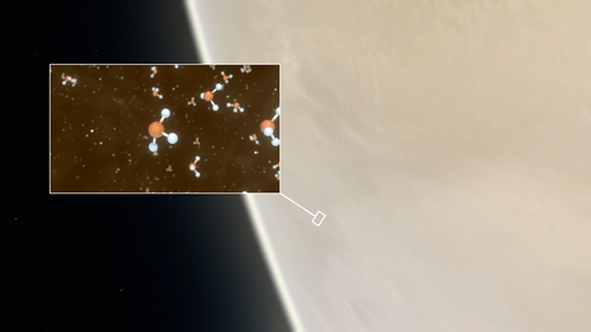
IMGW-PIB on Mars?
The research on Mars and Venus shows that climate and weather models used on Earth can be successfully adapted to the analysis of other planets’ atmospheres both in the past and now. It was determined through numerical simulations that there was probably a shallow ocean of liquid water on Venus and that its surface temperature allowed organisms to grow. In the case of Mars, climate models have unraveled the mystery of its „disappearing” atmosphere. These discoveries would not have been made with only data from space probes. On the other hand, it was the actual observations of both planets that provided the necessary information for the correct validation of the models.
More than 20 years after the first attempts to use climate and weather models to study the atmosphere of Mars and Venus, our knowledge of the universe is much greater. We have answered many difficult questions, and we also have a better understanding of the processes influencing the formation of planets. Because of computer simulations, the planning and implementation of space missions have become much more efficient and predictable. An interdisciplinary approach to space exploration, based, among others, in such fields of science as astrophysics, planetology, earth sciences, and heliophysics, reawakens dreams of finding, somewhere in the universe, the Holy Grail of astronomy – a habitable planet, similar to our globe.
[1] The joint European Space Agency and Russian Space Agency Roskosmos research mission, aims at searching for traces of biological and geological processes on Mars.
[2] A Mars research mission by America’s space agency NASA started in July 2020.
[3] The VIRA prototype was developed in the 1970s based on astronomical observations and results from Venusian probes penetrating its atmosphere, including the Venera, Pioneer Venus Orbiter and Venus Express missions. In the following years, the model was supplemented with new measurement data including: chemical composition, winds and turbulences in different layers of the atmosphere, the structure of thermal winds and clouds.
Main photo: Alexander Andrews | Unsplash
